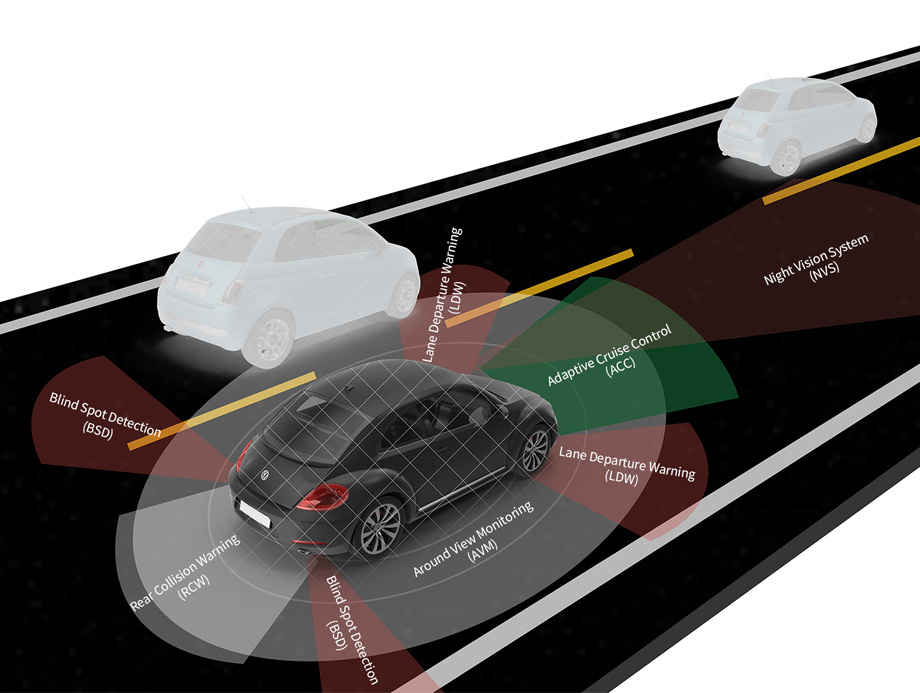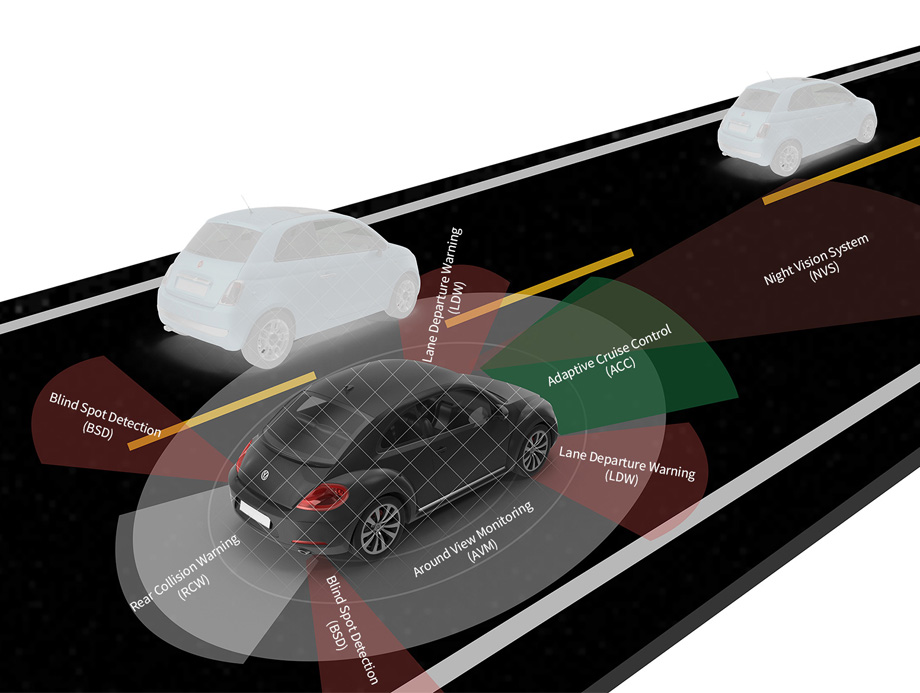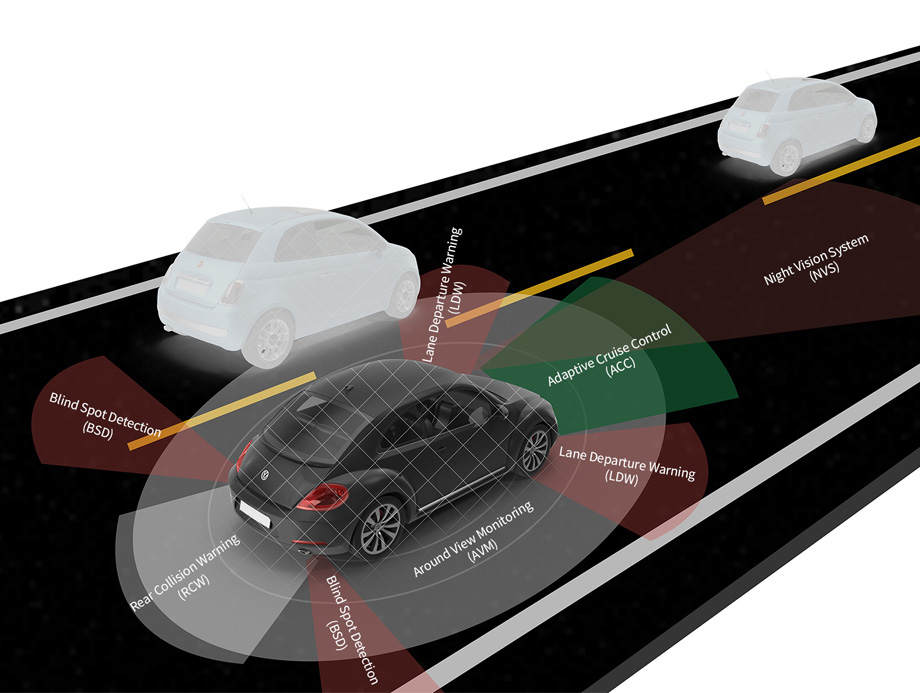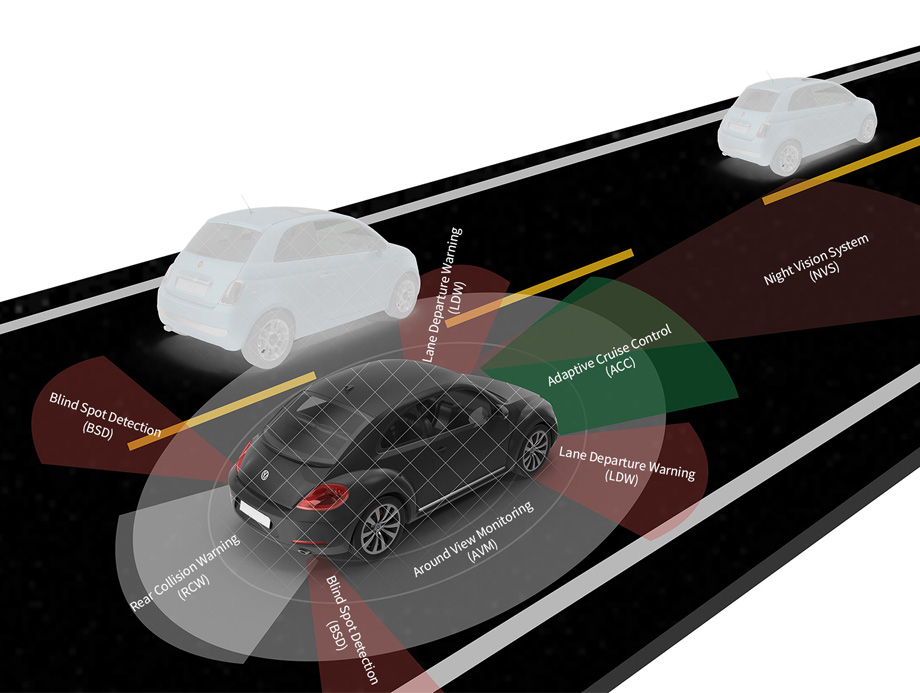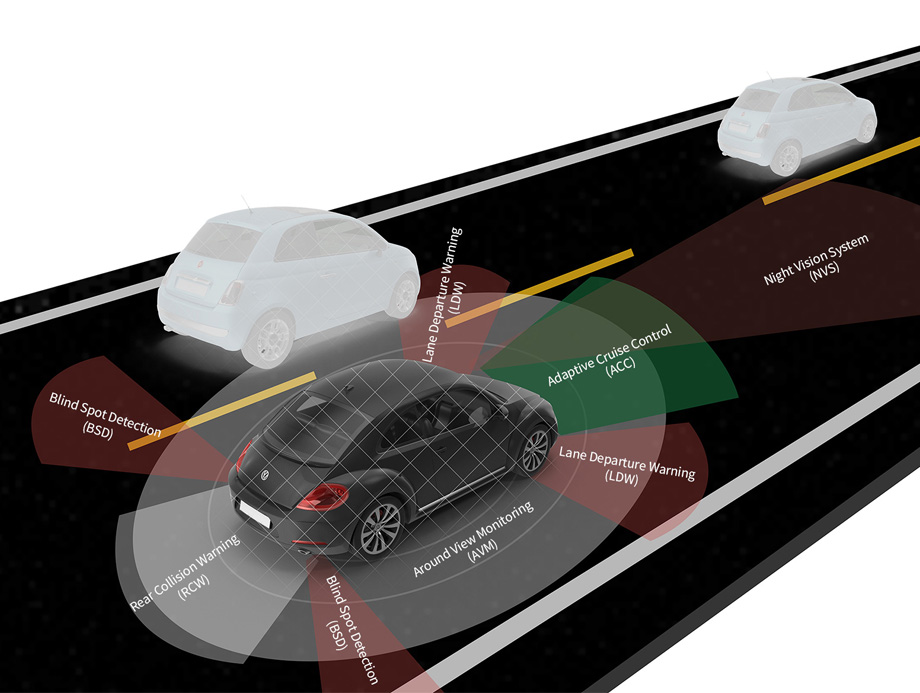RCW: Rear Collison Warning
Rear Collison Warning system refers to the real-time monitoring of the target behind the vehicle through the radar during the driving process. When the system detects that there are other moving targets that are approaching rapidly behind and there is a risk of collision. The system will send out an alarm message and turn on the double flash to remind the vehicles behind to slow down or maintain a safe distance.
ACC: Adaptive Cruise Control
When the vehicle is running, the vehicle distance sensor installed in the front of the vehicle continuously scans the road ahead of the vehicle, while the wheel speed sensor collects the vehicle speed signal. When the distance to the vehicle in front is too small, the ACC control unit can properly brake the wheels by coordinating with the anti-lock brake system and the engine control system, and reduce the output power of the engine so that the vehicle and the vehicle in front are always connected. Keep a safe distance.
LDW: Land Departure Warning
Lane Departure Warning system is mainly composed of HUD head-up display, camera, controller and sensors. When the lane departure system is turned on, the camera will always collect the marking lines of the driving lane. The position parameters of the car in the current lane are obtained through image processing. When the car is detected to deviate from the lane, the sensor will collect the vehicle data and the driver's operating status in time, and then the controller will send out an alarm signal. The whole process is completed in about 0.5 seconds. Provides the driver with more reaction time. And if the driver turns on the turn signal and changes lanes normally, the lane departure warning system will not make any prompts.
NVS: Night Vision
The car night vision system uses infrared technology to make the darkness look like day, so that the driver can see farther and more clearly in the dark. The structure of the night vision system consists of 2 parts; one part is an infrared camera, and the other part is a light display system on the windshield.
BSD: Blind Spot Detection
Blind Spot Detection system uses sensors such as anti-collision radar, Doppler radar, and infrared radar arranged around the vehicle, blind spot detectors and other facilities. Controlled by a computer, it can provide the driver with the necessary information around the car with sound, light and form at any time in dangerous situations such as overtaking, backing up, changing lanes, heavy fog, and rain, and can automatically take measures to effectively prevent accidents occur.
AVM: Around View Monitor
Images are captured by multiple (generally four) ultra-large wide-angle fisheye lenses, and distortion correction and splicing are performed on the captured images after a special algorithm to form a system of panoramic effects around the object. This system is mostly used in vehicles to realize functions such as driving without blind spots and panoramic parking, which is helpful for safe driving.
